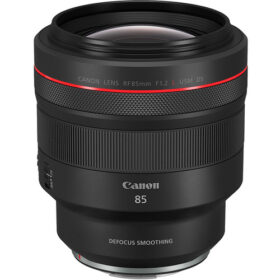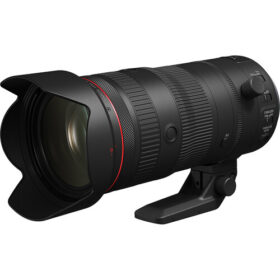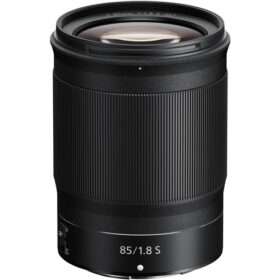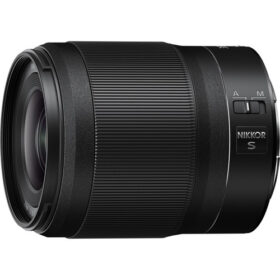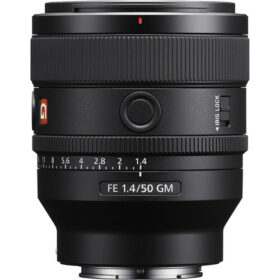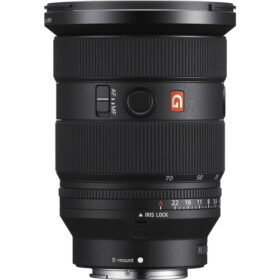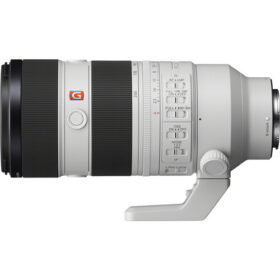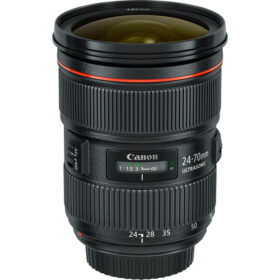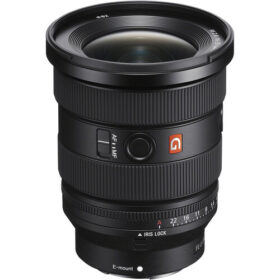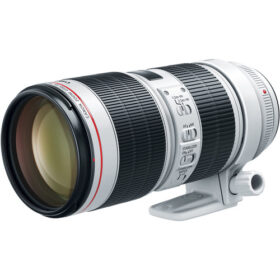
Lens
- 1 to 7 Days - ₹1,500 per day
- 8 to 14 Days - ₹1,200 per day
- @ Shoot Floor Kochi - ₹1,200 per day
The Canon RF 85mm f/1.2 L USM DS is a unique portrait-length prime, characterized by its flattering focal length, exceptionally bright maximum aperture, and advanced optical design. Differentiating itself from Canon’s other RF 85mm f/1.2 lens, this version features a DS (Defocus Smoothing) coating that helps to soften and smooth the bokeh quality when working at wider aperture settings, making it particularly suitable for shallow depth of field applications.
- Model: RF 85mm
- Brand: Canon
- 1 to 7 Days - ₹1,400 per day
- 8 to 14 Days - ₹1,200 per day
- @ Shoot Floor Kochi - ₹1,120 per day
A powerful multiuse zoom for photo and video, the RF 24-105mm f/2.8 L IS USM Z Lens from Canon is the first of its kind at this focal length and aperture. By utilizing dual Nano USM motors, this lens achieves fast and nearly silent autofocusing. The constant f/2.8 aperture allows for optimal low light performance and provides flattering bokeh for portraits at any focal length. In-lens optical image stabilization offers five and a half stops of correction, or eight stops with Coordinated IS when paired with a compatible camera. Four ultra-low dispersion elements and three aspherical elements help create sharper images and reduce chromatic and spherical aberrations. Additionally, the RF 24-105mm f/2.8 benefits from Super Spectra, Air Sphere, and Fluorine coatings, which work together to minimize ghosting and flare caused by lens surface reflection.
- Model: Canon RF 24-105mm f/2.8 L IS USM Z Lens
- Brand: Canon
- 1 to 7 Days - ₹750 per day
- 8 to 14 Days - ₹650 per day
- @ Shoot Floor Kochi - ₹600 per day
- Model: Nikon NIKKOR Z 85mm f/1.8 S
- Brand: Nikon
- 1 to 7 Days - ₹750 per day
- 8 to 14 Days - ₹650 per day
- @ Shoot Floor Kochi - ₹600 per day
- Model: Nikon NIKKOR Z 35mm f/1.8 S
- Brand: Nikon
- 1 to 7 Days - ₹1,200 per day
- 8 to 14 Days - ₹1,000 per day
- @ Shoot Floor Kochi - ₹960 per day
Offering the latest in lens technology, the Sony FE 50mm f/1.4 GM Lens is designed with sophisticated elements and advanced optics to provide uncompromising image quality for still and video shooters alike. A member of the esteemed G Master lens family, this versatile normal-length prime provides a natural field of view, allowing you to create memorable images to last a lifetime.
- Model: FE 50mm f/1.4 GM Lens
- Brand: sony
- 1 to 7 Days - ₹1,200 per day
- 8 to 14 Days - ₹1,000 per day
- @ Shoot Floor Kochi - ₹960 per day
A refined take on the fast standard zoom, the Sony FE 24-70mm f/2.8 GM II is not only smaller and lighter than the previous generation, it also features a variety of optical, focusing, and handling upgrades, catering to both photo and video applications, that make this the most well-rounded G Master zoom to date.
- Model: FE 24-70mm f/2.8 GM II Lens
- Brand: Sony
- 1 to 7 Days - ₹1,200 per day
- 8 to 14 Days - ₹1,000 per day
- @ Shoot Floor Kochi - ₹960 per day
Sony’s FE 70-200mm f/2.8 GM OSS II takes the classic fast zoom and elevates performance to a whole new level. This lens builds upon the best parts of the original and makes them even better while simultaneously reducing weight by 29%—making this lens the lightest in its class. Sony has also given this lens a brand-new AF system that promises up to four times the speed and has made plenty of optical optimizations that will appeal to video shooters, including improvements to focus breathing and focus shift. Whether you shoot portraits, sports, landscapes, or video, the 70-200mm f/2.8 will get the job done.
- Model: GM 70-200mm f/2.8 OSS II Lens
- Brand: Sony
- 1 to 7 Days - ₹750 per day
- 8 to 14 Days - ₹600 per day
- @ Shoot Floor Kochi - ₹600 per day
Spanning a popular and versatile range of focal lengths, the EF 24-70mm f/2.8L II USM is a Canon L-series zoom commonly thought of as the workhorse of lenses. Ranging from wide-angle to portrait length, this lens is also distinguished by its constant f/2.8 maximum aperture to benefit working in difficult lighting conditions and to afford greater control over depth of field. The lens is also characterized by its sophisticated optical design, which includes one Super UD element and two UD elements, which reduce color fringing and chromatic aberrations in order to realize a high degree of color accuracy and clarity.
- Model: EF 24-70mm f/2.8L II USM
- Brand: Canon
- 1 to 7 Days - ₹1,500 per day
- 8 to 14 Days - ₹1,400 per day
- @ Shoot Floor Kochi - ₹1,200 per day
Combining G Master performance with the lightest and smallest form factor in its class, Sony rounds out its trinity of f/2.8 G Master zoom lenses with its latest wide-angle offering for video and stills shooters, the FE 16-35mm f/2.8 GM II Lens, which boasts a variety of optical, focusing, and handling upgrades.
- Model: FE 16-35mm f/2.8 GM II Lens
- Brand: Sony
- 1 to 7 Days - ₹1,000 per day
- 8 to 14 Days - ₹900 per day
- @ Shoot Floor Kochi - ₹800 per day
One of the most versatile lenses available, the EF 70-200mm f/2.8L IS III USM from Canon is an L-series telephoto zoom distinguished by its bright design and advanced optics. Ideal for a variety of subjects ranging from portraiture to sports, the fast constant f/2.8 maximum aperture excels in difficult lighting conditions and also offers increased control over depth of field for isolating subjects. The optical layout makes use of one fluorite element and five UD elements to suppress chromatic aberrations and color fringing in order to realize a high degree of clarity throughout the zoom range.
- Model: EF 70-200mm f/2.8L IS III
- Brand: Canon


